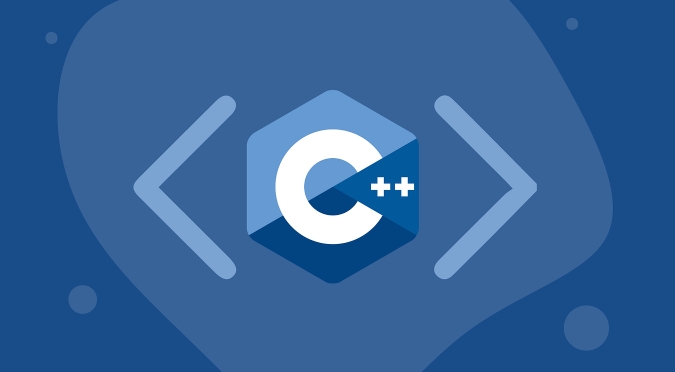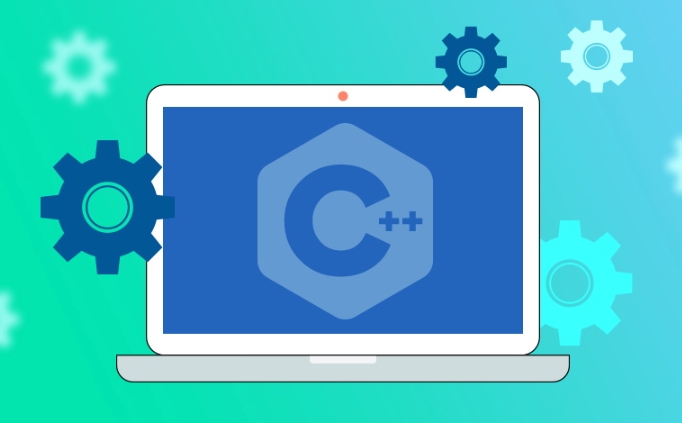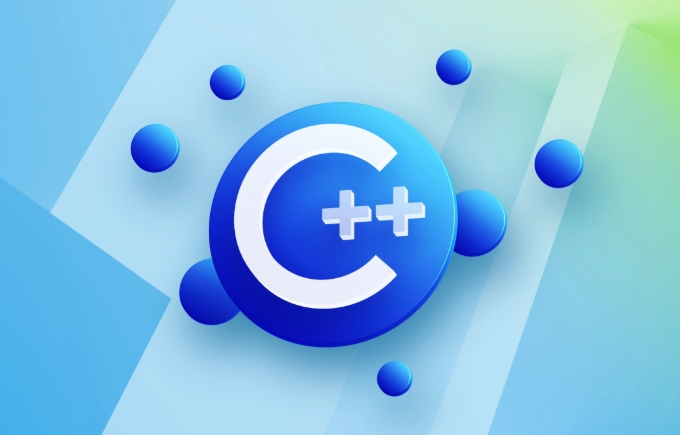The factory mode is mainly used in C for the creation and use of decoupled objects. It introduces factory class to centrally manage the creation of objects, so that the client does not need to care about specific implementation details, and only needs to pass in parameters to obtain the required objects. Its core structure includes abstract products, specific products and factory categories. For example, in a drawing program, the corresponding graphic object can be generated by passing in "circle" or "square". In actual use, it is recommended: 1. Reduce memory allocation in combination with singletons or object pools; 2. Use smart pointers to manage resources; 3. Encapsulate type selection logic to support dynamic expansion; 4. Decide whether to introduce abstract factory classes based on needs. The factory model is suitable for scenarios where creation details need to be frequently expanded or hidden, but should be kept simple.

Using factory mode in C is mainly to solve the problem of decoupling of object creation and use. Simply put, it is to let a class hand over the responsibility of creating specific objects to another "factory" class to complete, which can improve the scalability and maintainability of the code.

The following scenarios and techniques can help you understand and apply the factory model more naturally.
What is the factory model?
Factory pattern is a creative design pattern . It defines a unified interface or base class, and a special "factory" class is responsible for creating specific object instances.
This is especially useful when you need to create different subclasses according to different conditions, such as loading different database connection classes based on configuration files, generating different types of parsers based on user input, etc.

Let's give a simple example:
You want to write a drawing program that supports drawing circles, squares and triangles. If each graphic is directly new, many changes will have to be made when adding new graphic in the later stage. When using the factory model, you only need to add a judgment to the factory to easily expand.
The basic structure of the factory model
Generally speaking, the factory model includes the following components:

- Abstract Product Class : Defines the public interface of the product.
- Concrete Product : Concrete Product that implements abstract products.
- Factory class : Provides a method to return different product instances according to parameters.
Let's give a basic example:
class Shape {
public:
virtual void draw() = 0;
};
class Circle : public Shape {
public:
void draw() override {
std::cout << "Draw Circle" << std::endl;
}
};
class Square : public Shape {
public:
void draw() override {
std::cout << "Draw Square" << std::endl;
}
};
class ShapeFactory {
public:
Shape* createShape(const std::string& type) {
if (type == "circle") return new Circle();
if (type == "square") return new Square();
return nullptr;
}
};In this way, the client only needs to know the string to get the corresponding graphic object, and does not need to care about how to create it.
Some optimization suggestions in actual use
- Avoid new objects every time
- It can combine singleton mode, object pool and other mechanisms to reduce frequent memory allocation.
- Manage resources with smart pointers
- After C 11, it is recommended to use
std::unique_ptrorstd::shared_ptrto prevent memory leakage.
- After C 11, it is recommended to use
- Encapsulation type selection logic
- Don’t write type judgments in the factory. You can dynamically add types through the registration mechanism.
- Consider whether abstract factory classes are needed
- If there is only one product family, an abstract factory may not be needed; but if there are multiple product series, an abstract factory is needed to unify the creation process.
For example, you can transform the above factory function like this:
std::unique_ptr<Shape> createShape(const std::string& type) {
if (type == "circle") return std::make_unique<Circle>();
if (type == "square") return std::make_unique<Square>();
return nullptr;
}This is not only safer, but also easier to integrate into modern C projects.
When is the factory model suitable?
- When there are multiple similar classes in your system and they will change or expand frequently.
- When you want to hide object creation details and let the caller focus on usage rather than construction.
- When you want to create objects in a centralized manner, it is convenient for logging, exception handling, caching and other operations.
If you just use one or two categories temporarily, there is no need to force the design pattern to be applied, and it is more important to keep it simple.
Basically that's it. The factory model itself is not complicated, but if used well in actual projects, it can indeed make your code more organized and easier to maintain.
The above is the detailed content of Using the Factory Pattern in C. For more information, please follow other related articles on the PHP Chinese website!

Hot AI Tools

Undress AI Tool
Undress images for free

Undresser.AI Undress
AI-powered app for creating realistic nude photos

AI Clothes Remover
Online AI tool for removing clothes from photos.

Clothoff.io
AI clothes remover

Video Face Swap
Swap faces in any video effortlessly with our completely free AI face swap tool!

Hot Article

Hot Tools

Notepad++7.3.1
Easy-to-use and free code editor

SublimeText3 Chinese version
Chinese version, very easy to use

Zend Studio 13.0.1
Powerful PHP integrated development environment

Dreamweaver CS6
Visual web development tools

SublimeText3 Mac version
God-level code editing software (SublimeText3)
 What is high-frequency virtual currency trading? The principles and technical implementation points of high-frequency trading
Jul 23, 2025 pm 11:57 PM
What is high-frequency virtual currency trading? The principles and technical implementation points of high-frequency trading
Jul 23, 2025 pm 11:57 PM
High-frequency trading is one of the most technologically-rich and capital-intensive areas in the virtual currency market. It is a competition about speed, algorithms and cutting-edge technology that ordinary market participants are hard to get involved. Understanding how it works will help us to have a deeper understanding of the complexity and specialization of the current digital asset market. For most people, it is more important to recognize and understand this phenomenon than to try it yourself.
 C vector get first element
Jul 25, 2025 am 12:35 AM
C vector get first element
Jul 25, 2025 am 12:35 AM
There are four common methods to obtain the first element of std::vector: 1. Use the front() method to ensure that the vector is not empty, has clear semantics and is recommended for daily use; 2. Use the subscript [0], and it also needs to be judged empty, with the performance comparable to front() but slightly weaker semantics; 3. Use *begin(), which is suitable for generic programming and STL algorithms; 4. Use at(0), without manually null judgment, but low performance, and throw exceptions when crossing the boundary, which is suitable for debugging or exception handling; the best practice is to call empty() first to check whether it is empty, and then use the front() method to obtain the first element to avoid undefined behavior.
 How to develop AI-based text summary with PHP Quick Refining Technology
Jul 25, 2025 pm 05:57 PM
How to develop AI-based text summary with PHP Quick Refining Technology
Jul 25, 2025 pm 05:57 PM
The core of PHP's development of AI text summary is to call external AI service APIs (such as OpenAI, HuggingFace) as a coordinator to realize text preprocessing, API requests, response analysis and result display; 2. The limitation is that the computing performance is weak and the AI ecosystem is weak. The response strategy is to leverage APIs, service decoupling and asynchronous processing; 3. Model selection needs to weigh summary quality, cost, delay, concurrency, data privacy, and abstract models such as GPT or BART/T5 are recommended; 4. Performance optimization includes cache, asynchronous queues, batch processing and nearby area selection. Error processing needs to cover current limit retry, network timeout, key security, input verification and logging to ensure the stable and efficient operation of the system.
 C bit manipulation example
Jul 25, 2025 am 02:33 AM
C bit manipulation example
Jul 25, 2025 am 02:33 AM
Bit operation can efficiently implement the underlying operation of integers, 1. Check whether the i-th bit is 1: Use n&(1
 C Standard Library Explained
Jul 25, 2025 am 02:11 AM
C Standard Library Explained
Jul 25, 2025 am 02:11 AM
The C standard library helps developers improve code quality by providing efficient tools. 1. STL containers should be selected according to the scene, such as vector suitable for continuous storage, list suitable for frequent insertion and deletion, and unordered_map is suitable for fast search; 2. Standard library algorithms such as sort, find, and transform can improve efficiency and reduce errors; 3. Intelligent pointers unique_ptr and shared_ptr effectively manage memory to avoid leakage; 4. Other tools such as optional, variant, and function enhance code security and expressiveness. Mastering these core functions can significantly optimize development efficiency and code quality.
 C function example
Jul 27, 2025 am 01:21 AM
C function example
Jul 27, 2025 am 01:21 AM
Functions are the basic unit of organizing code in C, used to realize code reuse and modularization; 1. Functions are created through declarations and definitions, such as intadd(inta,intb) returns the sum of the two numbers; 2. Pass parameters when calling the function, and return the result of the corresponding type after the function is executed; 3. The function without return value uses void as the return type, such as voidgreet(stringname) for outputting greeting information; 4. Using functions can improve code readability, avoid duplication and facilitate maintenance, which is the basic concept of C programming.
 Understanding the C ABI
Jul 24, 2025 am 01:23 AM
Understanding the C ABI
Jul 24, 2025 am 01:23 AM
C ABI is the underlying rule that the compiler follows when generating binary code, which determines mechanisms such as function calls, object layout, name adaptation, etc. 1. It ensures that different compilation units interact correctly, 2. Different compilers or versions may adopt different ABIs, affecting dynamic library links, STL transfers, virtual function calls, etc. 3. Cross-platform development, long-term system maintenance, third-party library use and other scenarios need to pay special attention to ABI consistency, 4. ABI can be controlled through macro definitions and compilation options, and use tools to view the symbol table to judge consistency.
 C std::is_same example
Jul 24, 2025 am 03:22 AM
C std::is_same example
Jul 24, 2025 am 03:22 AM
std::is_same is used to determine whether the two types are exactly the same at compile time and return a bool value. 1. In the basic usage, std::is_same::value is true when T and U are exactly the same, otherwise it is false. Different modifiers such as const, reference, pointer, etc. will cause false; 2. You can remove the type modification with std::remove_const, std::remove_reference and other types, and then compare it to achieve more flexible type judgment; 3. It is often used in template metaprogramming in practical applications, such as conditional compilation with ifconstexpr, and perform different logic according to different types; 4.






